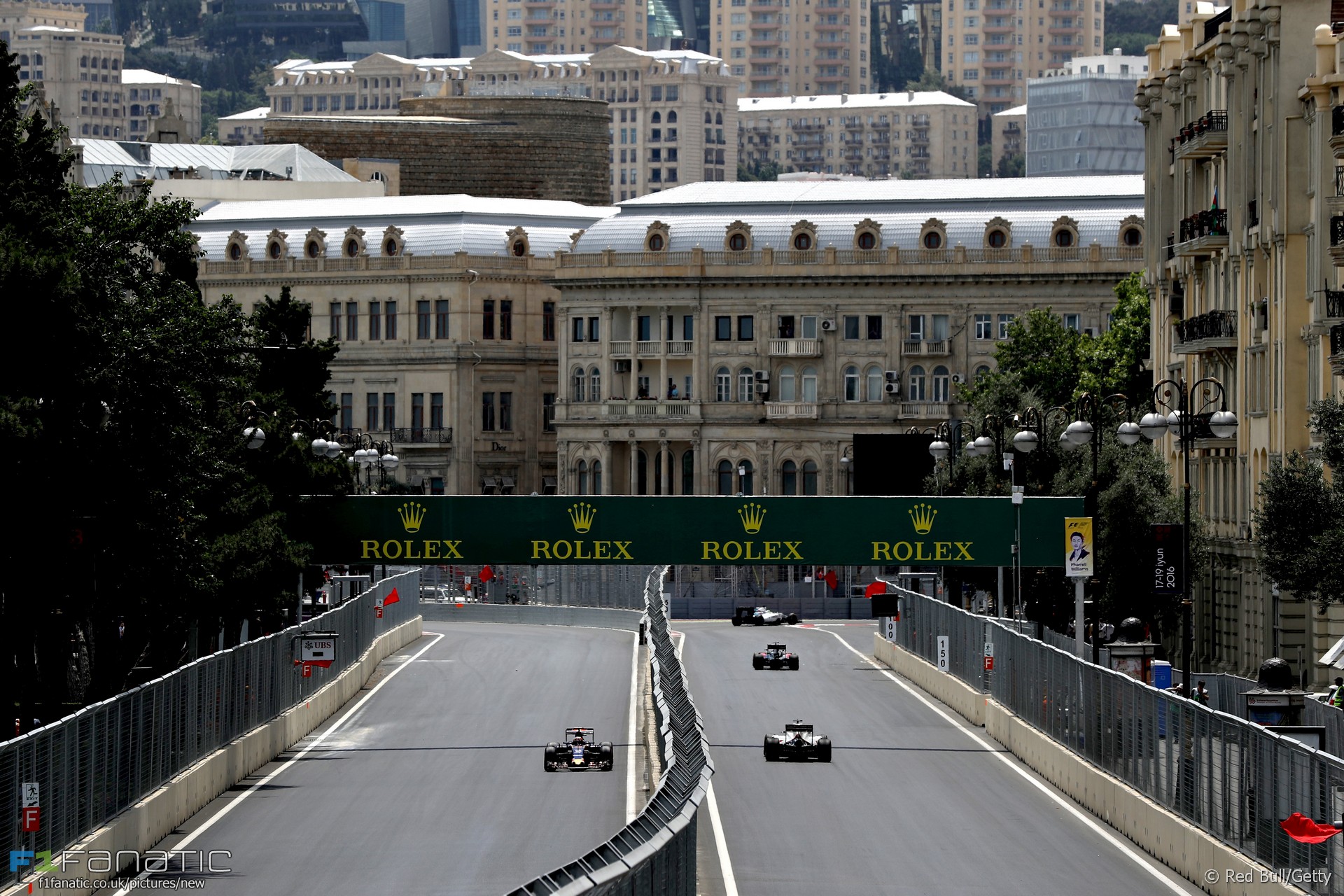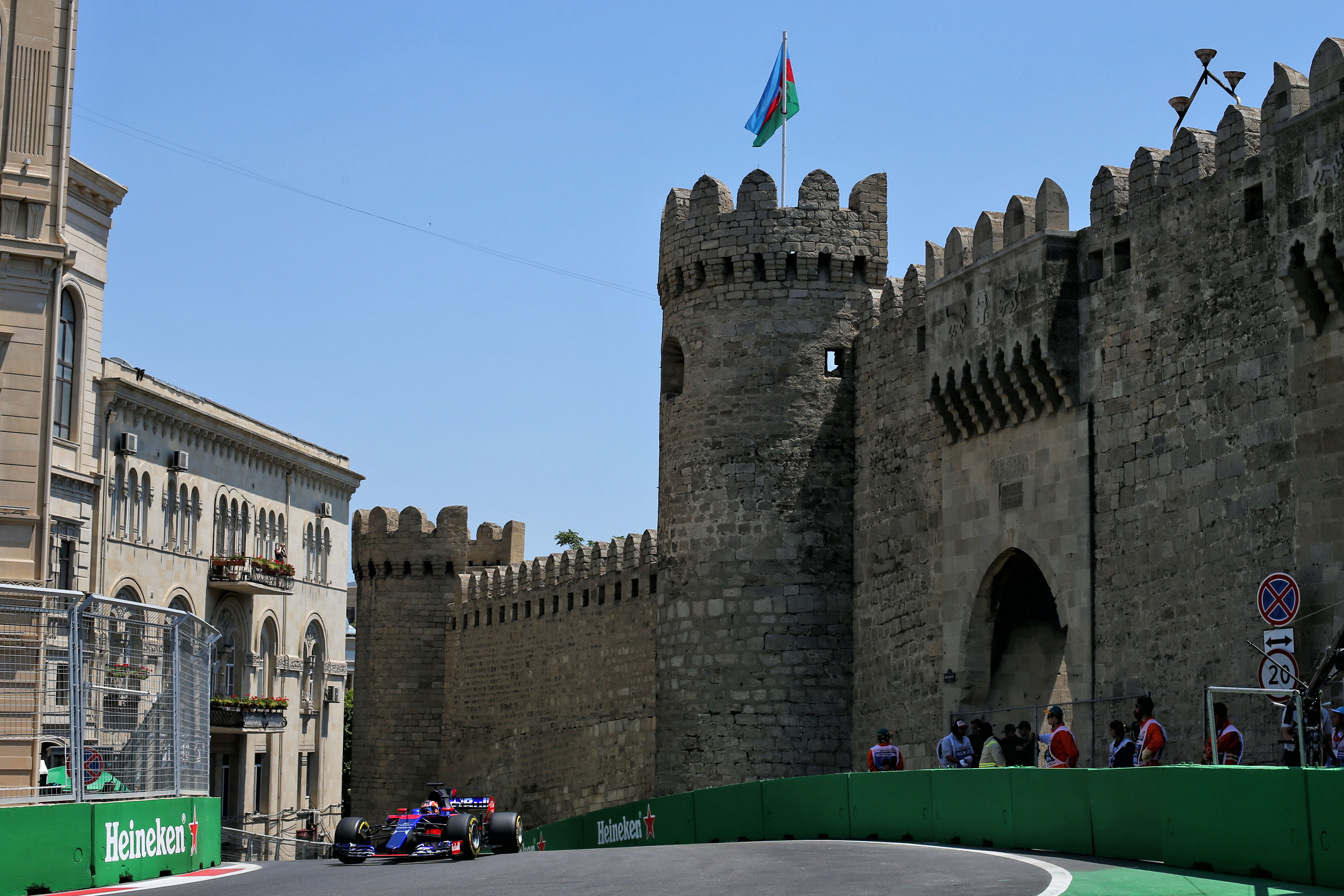Baku - a slinky, charming and photogenic circuit. Fast multi-coloured snake on the secular static of the roads of the Old Town. The 2016 season saw Azerbaijan become the latest addition to the Formula One calendar, with capital city Baku playing host to the fastest street circuit in F1 racing, on a layout designed by renowned F1 track architect Hermann Tilke. “Our brief to Tilke Engineering was simple - create a circuit that is unique, one that will help the Grand Prix in Baku quickly establish itself as one of the most exciting, thrilling venues on the F1 calendar, and one that the fans and teams alike are excited about”, said Azad Rahimov, Azerbaijan's Minister of Youth and Sport.

Tilke's design married technical sectors with extreme straights to create a stunning circuit that also thrives on Baku's very attractive urban atmosphere and its great combination of history and 21st century style. The historic city centre, the beautiful seaside promenade and the impressive government house all combine to provide the perfect backdrop for the spectacular track. “Obviously street circuits present a number of challenges, in terms of circuit design, but we have been able to incorporate some unique features that will provide the teams and fans with fascinating racing”, commented Tilke.

Baku City Circuit hosted the first ever Azerbaijan Grand Prix on June 25th, the eighth race of the 2017 season. Known for its proximity to surrounding walls, drivers praised the track in 2016 for its long straight and slow technical sections giving little room for error. “For example, the extremely narrow uphill section at the old town wall rewards pinpoint accuracy and courage, while the 2.2 kilometres along the promenade sees the cars running flat out at very high top speeds - an incredible spectacle for the race fans on track and the viewers at home.”

The Baku City Circuit, constructed near Baku Boulevard, is a temporary course around the streets of Azerbaijan’s capital. The inaugural Formula One race at the circuit was the 2016 European Grand Prix and its support events. The 6 km anti-clockwise layout makes it the second-longest circuit on the Formula One calendar behind Spa-Francorchamps in Belgium. It will feature 20 turns and range in width from 7.6 m to 13 m. An average lap speed of 211 kph is expected with a top speed close to 360 km/h.

With this being a new event, there has been only one configuration. The track has three sections: a series of short straights and 90° turns in the city center, the challenging and technical section around the perimeter of the walled old city, and a two kilometer straight down Baku Boulevard returning to the start. The circuit starts on Baku Boulevard, in front of Azadliq (Freedom) Square on drivers left, and next to Milli Park to drivers right, on the coast of the Caspian Sea, the world's largest lake. Azadliq Square is also the location of Government House, which contains much of the governmental departments of Azerbaijan. The cars make a quick 90° left onto Aleksander Pushkin, then another left on Xaqani Kucesi. Four more right angle turns put the cars onto the divided section of Baku Boulevard, heading away from the start. Just before reaching the famous 'Maiden Tower', the cars make a sharp right, to start a loop around the old walled city. Included in this section is a place where the cars squeeze through a gap of less than eight meters. between a stone turret and an apartment building. After looping around the old city, and passing the historic Maiden Tower, the cars shoot down a two kilometer, very wide and gently curving section of Baku Boulevard, back to the start.

Many drivers praised the circuit for the challenge offered by its mixture of long straights, slow technical sections and no margin for error due to the proximity of the walls. The narrow confines have caused a number of problems with Turn Eight - the strip of tarmac which measures just 7.8 metres in width.


Videos



Comments
Authorize to comment